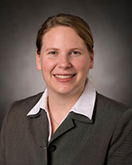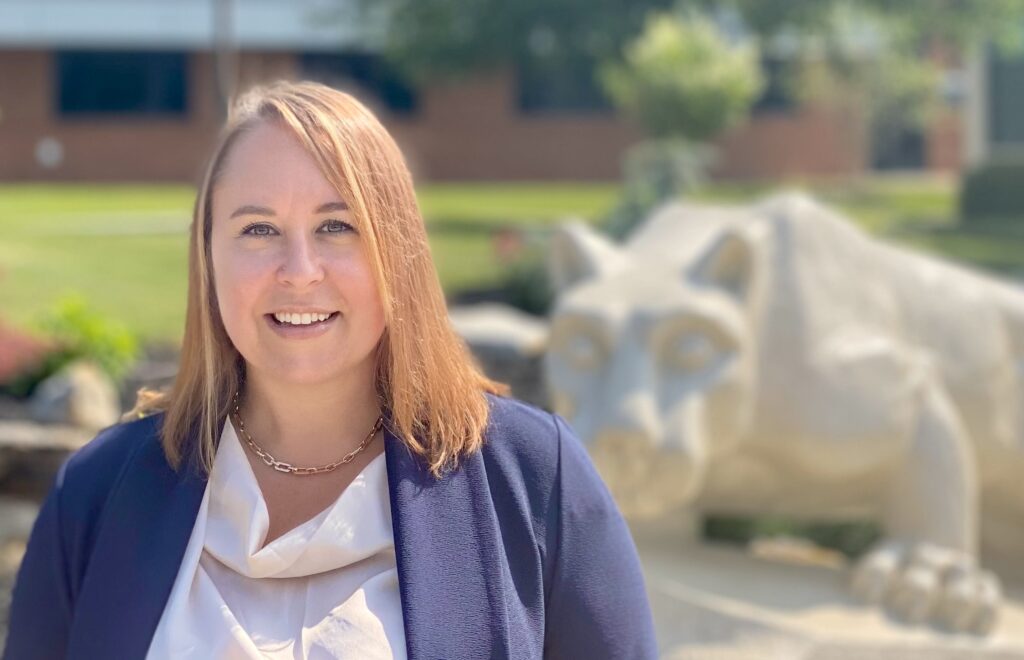Susan Stewart is a research associate and assistant professor in aerospace engineering and architectural engineering and teaches courses for Penn State World Campus. Here’s our interview with Susan:
Please give our readers a sense of your teaching background.

From a young age I knew I had an interest in teaching. As an undergraduate student, I was a teaching intern during my senior year and tutored as much as possible, but my first real teaching experience was in the final year of my Ph.D. program in mechanical engineering at Georgia Tech. I taught about two-thirds of a thermodynamics course as part of a teaching fellowship while being mentored by a faculty member. This was a really fantastic experience, as I was critiqued after each lecture, and I also worked with my mentor to help prepare for the next lecture. This is not a typical experience for engineering grad students, and it allowed me to then easily jump into my first teaching position when I came to Penn State. That position was with the Applied Research Laboratory in 2007, and then in my second year , I was asked to teach an undergraduate Wind and Hydro course for the energy engineering degree program. A couple of years later, I moved to a faculty position split between aerospace engineering and architectural engineering, largely focused on creating new online graduate courses in renewable energy, which are now part of the online Master of Professional Studies in Renewable Energy and Sustainability Systems.
Your position at Penn State intersects the fields of aerospace and architectural engineering. Can you explain how those two fields complement one another in your role as a research associate?
I am a mechanical engineer by background (all three degrees), my home department is in aerospace engineering, and I have a joint appointment with architectural engineering; I also teach in energy and mineral engineering. What ties all of these departments together is the topic of energy and, more specifically, renewable energy.
What specific courses do you teach for Penn State World Campus?
I am currently teaching AERSP 880 and EME 802 each fall, as well as AERSP 886 and AE 878 each summer for Penn State World Campus.
Can you tell us about the Collegiate Wind Competition?
Over the last few years, along with help from several of my colleagues, I have been leading teams of students in the U.S. Department of Energy’s Collegiate Wind Competition. This is a forum for undergraduate college students of multiple disciplines to investigate innovative wind energy concepts; gain experience designing, building, and testing a wind turbine to perform according to a customized market data–derived business plan; and establish a turbine deployment strategy. The team essentially develops a small wind turbine product for an off-grid market of their choosing, based on market research. They develop a business plan, build both a mock-up and a working scaled prototype, compete with the working prototype in a series of challenges at the competition, and are judged on their business plan for deploying the product. It is as close to a product development cycle as I have ever gotten. Our 2014 team in the inaugural competition year came away as overall champions. In 2015, the Collegiate Wind Competition focused on just the engineering challenge of testing the prototype in the wind tunnel, and our team came in third. We are now preparing for the full-scale 2016 Collegiate Wind Competition, with a couple of the 2015 team members leading the charge. If there are undergraduate Penn State World Campus students interested in learning more about the competition, they can contact me to discuss how to get involved.
What unique learning characteristics do Penn State World Campus students bring to the classroom environment?
I really enjoy working with World Campus students, as their diverse backgrounds, experiences, and perspectives seem to consistently bring about enriching discussions among the students beyond the planned lesson content. This has led to great peer-to-peer learning opportunities in each of my courses. As a result, a network forms among the students and faculty that extends beyond the courses and in spite of great distances.
What makes you smile?
I love to see my family achieving their goals, and I enjoy our precious time together. I also really enjoy seeing my students land their dream jobs. This is one of my main goals as an educator.

